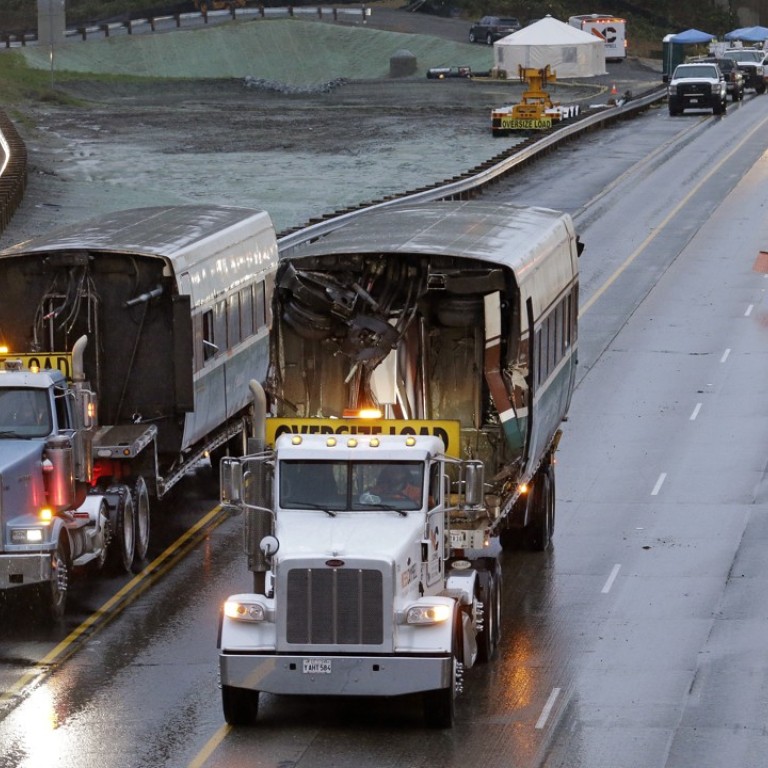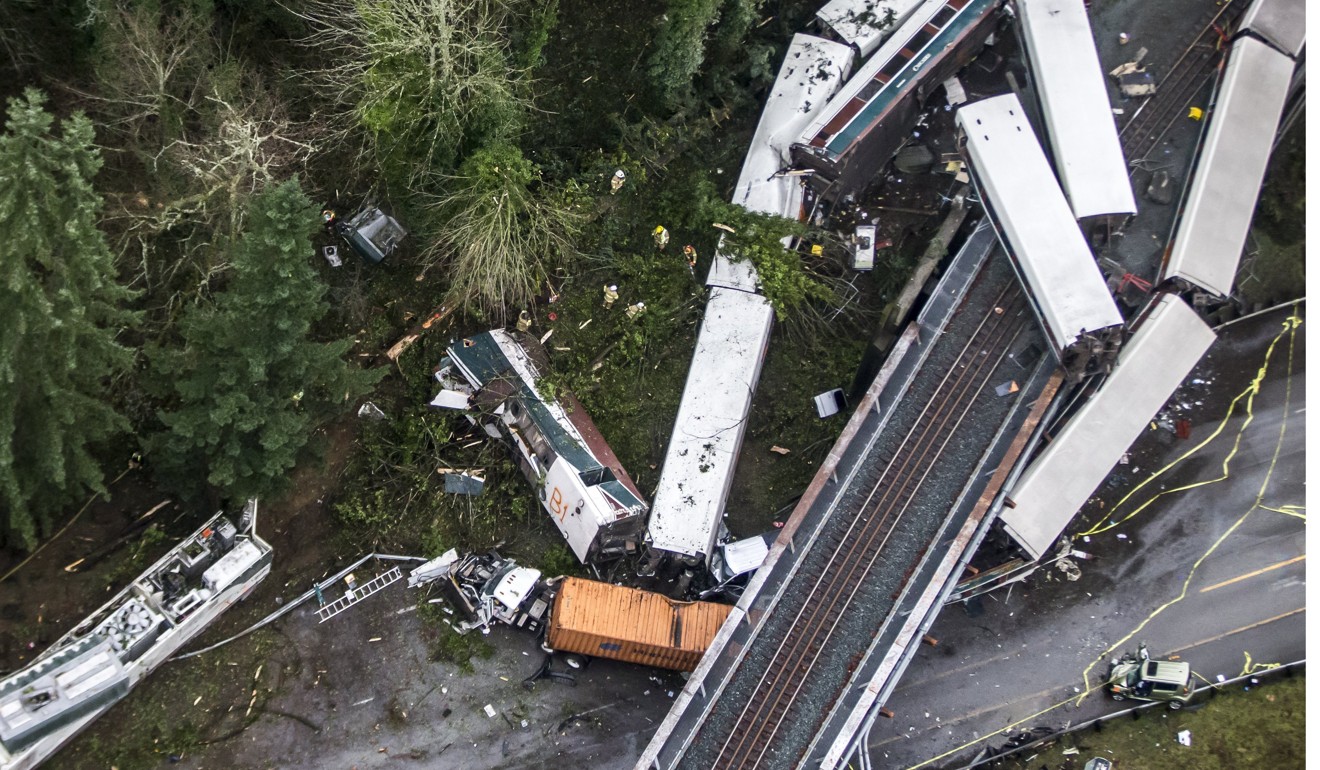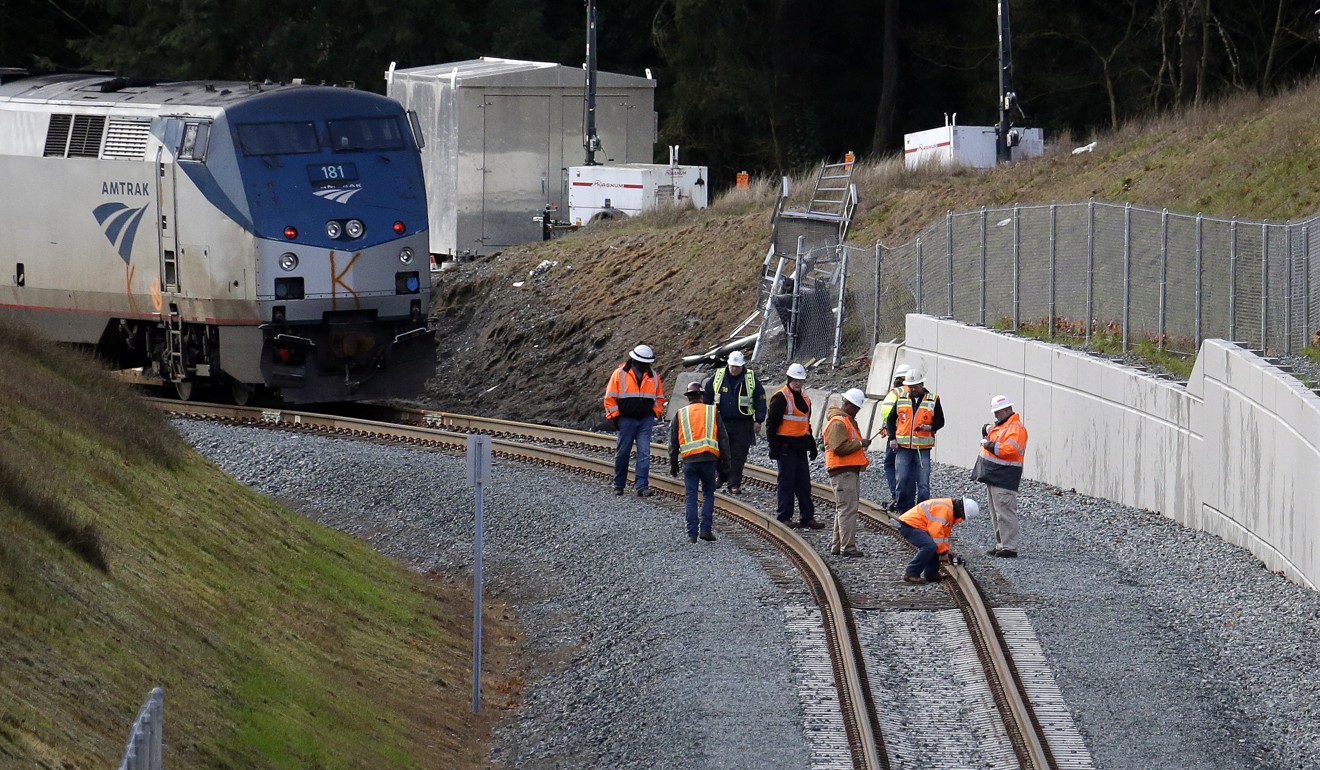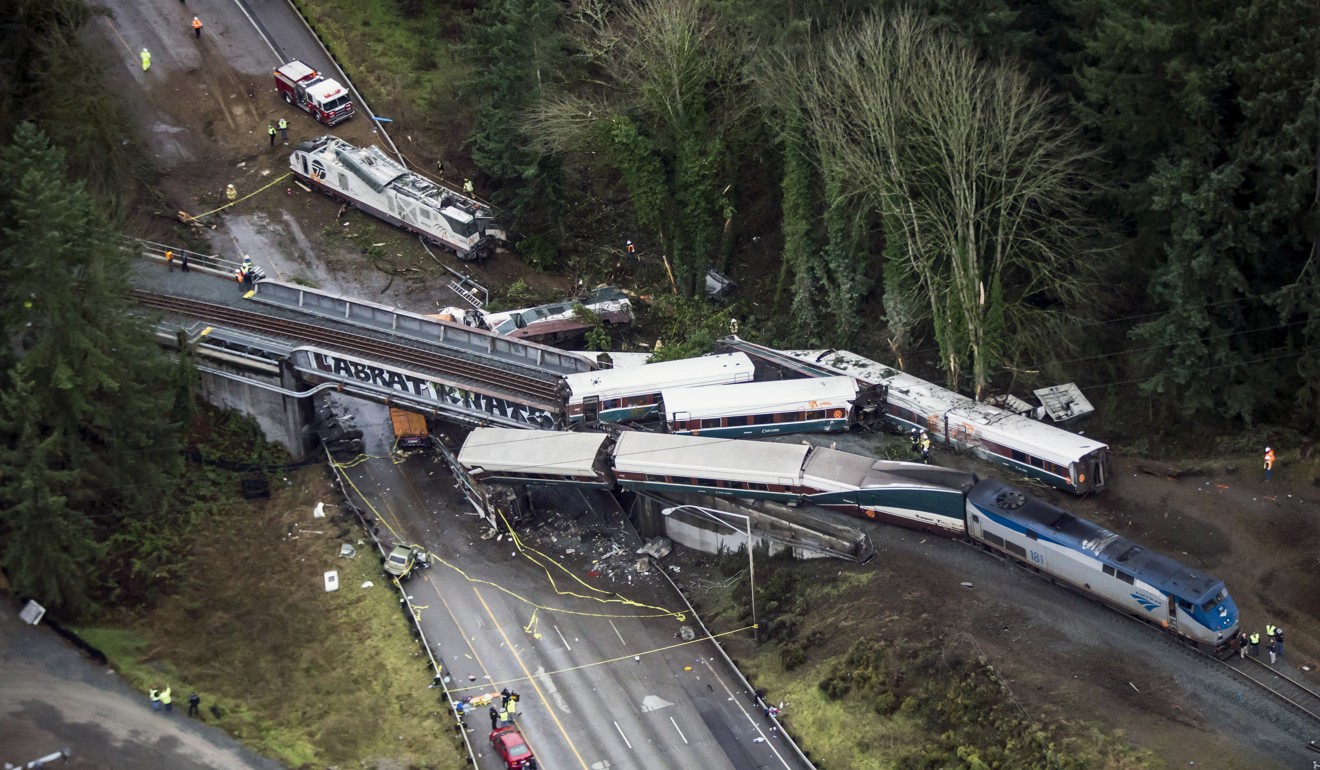
Amtrak train in deadly wreck was going about 130km/h in 50km/h zone
The us National Transportation Safety Board says the train that derailed Monday as it made its way from Seattle to Portland was going more that twice the posted speed limit when it jumped the tracks on a bridge over a busy interstate highway.
“Preliminary indications are that the train was travelling 80 miles per hour (129km/h) in a 30 mile per hour track,” NTSB member Bella Dinh-Zarr said Tuesday.
Three people where killed and more than 100 injured when one of two engines and 12 cars derailed, many of them tumbling onto a busy interstate highway below. Reports originally put the death toll at six.

As rain poured down Tuesday, cranes moved in to clear the damaged cars from Interstate 5, one of the busiest highways on the West Coast, which authorities said may remained closed for several days.
NTSB officials said that investigators had not yet spoken with the train crew and they were uncertain whether the crew was familiar with the speed limits in the zone. The train was making its inaugural run on a 23km stretch of recently refurbished track.
Two of the three people who died Monday were identified as Zack Willhoite and Jim Hamre, both train buffs who were eager to be aboard the inaugural run of the Amtrak train over the new route.
If the automatic braking system known as positive train control (PTC) had been operating, sensors along the track bed would have slowed the train before it entered left-hand curve where it derailed, and the wreck that caused their death could have been avoided, investigators said.


Congress initially took action after a 2008 collision between a commuter train and a Union Pacific freight locomotive that killed 25 people and injured 135 in Chatsworth, California. At that time, Congress mandated that all railroads have PTC installed by the end of 2015.
Though the Federal Railroad Administration pressed the railroads to complete the PTC system, the railroads told Congress in 2015 that PTC technology was too complex and the US$14.7 billion cost to equip freight and commuter lines was prohibitive.
Congress, which has received US$56 million in campaign contributions from the railroads since 1990, relented. The lawmakers voted to extend the PTC deadline until 2018 and left open the possibility they might grant a further extension until 2020.
“The shameful part, the disappointing part, is that positive train control should have been implemented nationwide long ago, and it hasn’t been,” Dinh-Zarr said Tuesday. “That’s one reason people have been losing their lives.”
SoundTransit, which owns the track on which the Amtrak train was operating Monday, planned to comply with the congressional mandate and install PTC sensors next year. Though Amtrak trains are equipped with PTC, the Washington state Department of Transportation said the necessary trackside sensors to enable it were not yet in place.
“It is now the end of 2017 and we still don’t have positive train control protecting people on these passenger routes,” Hersman said. “And there really is no reason not to move forward with positive train control.”
Willhoite was an IT specialist at Pierce Transit, which said in a statement that, “He will be sincerely missed. Our thoughts are with Zack’s family, as well as the families of the other victims, during this very difficult time.”
The death of Hamre, a former Washington state Department of Transportation, was confirmed by the group All About Washington, on whose board he served. Hamre posted photos on Facebook on Friday of the Amtrak train pulling into a station on the old coastal scenic route where the train used to run.
Both men were passionate advocates for passenger railroad.
“Jim was among the country’s most-respected and effective rail advocates and a good friend and mentor to me,” said Rail Passengers Association President Jim Mathews. “Both Jim and Zack have been advocates of transit and passenger rail for decades, and we can’t thank them enough for their work.”

